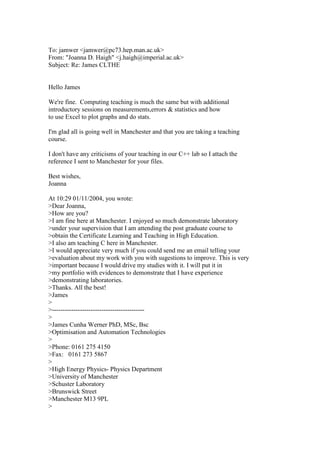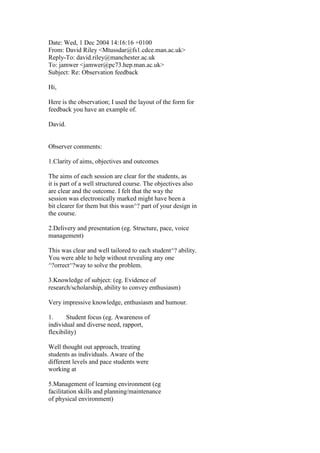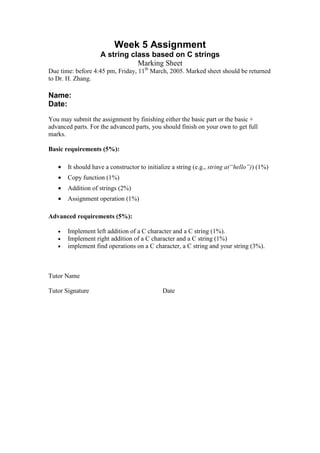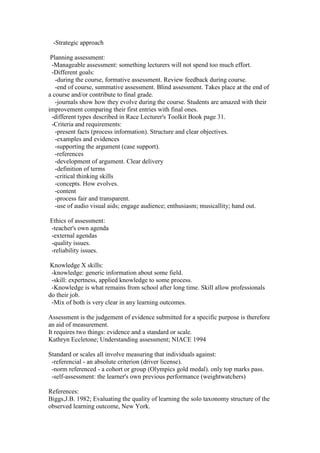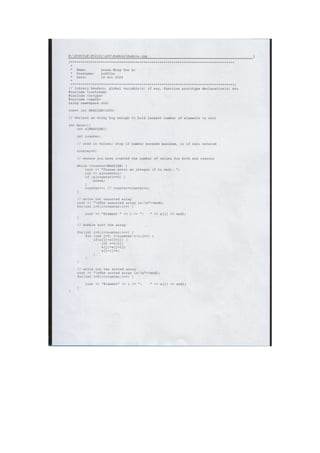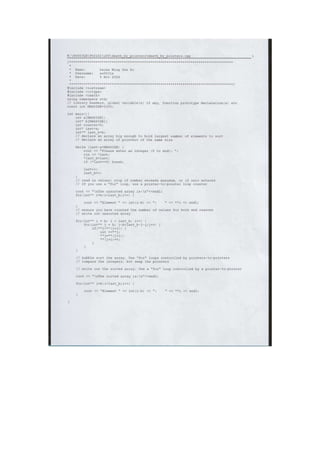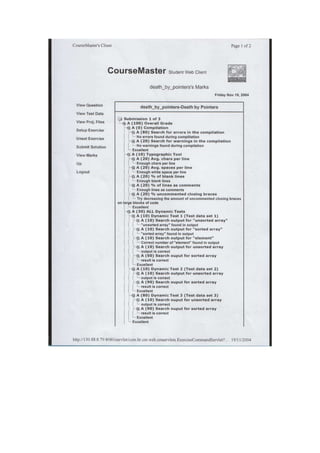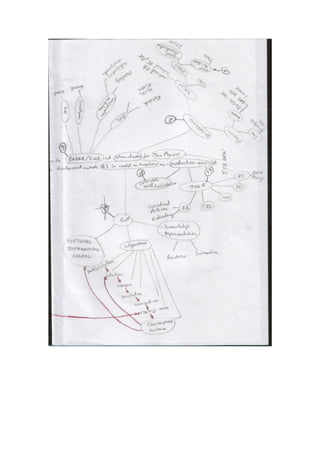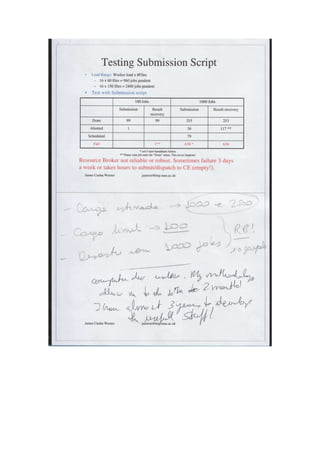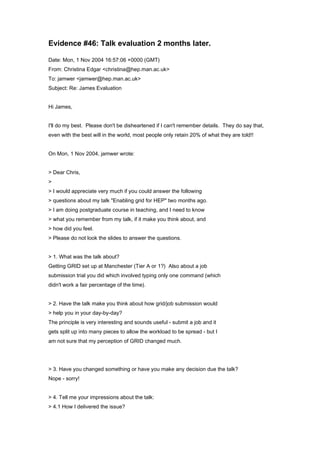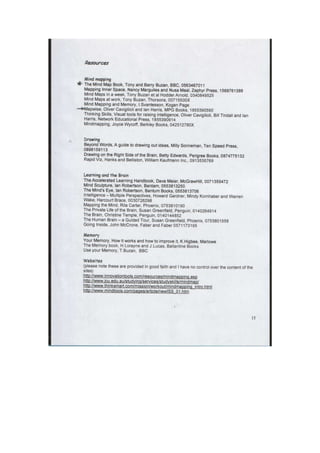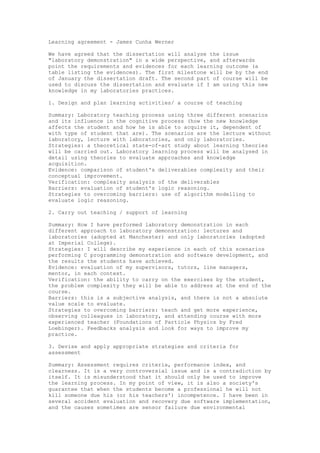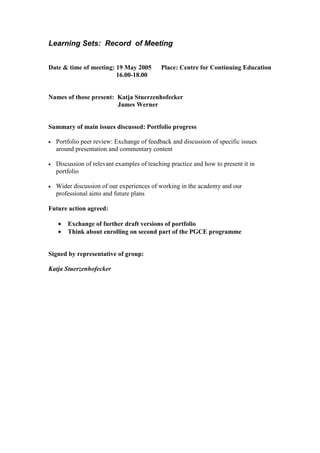This document presents a portfolio from Dr. James Cunha Werner demonstrating his qualifications for a certificate in learning and teaching. It summarizes his experiences teaching C programming laboratories at the University of Manchester and Imperial College. The document outlines Werner's approach to designing learning activities, which involves understanding learning theories and the requirements students will face. It also describes how he carried out support for learning through constructive feedback and assessment. Diagrams and examples are provided as evidence of Werner's abilities in areas like lesson planning, student support, reflection, and using strategies like mind maps to enhance teaching.
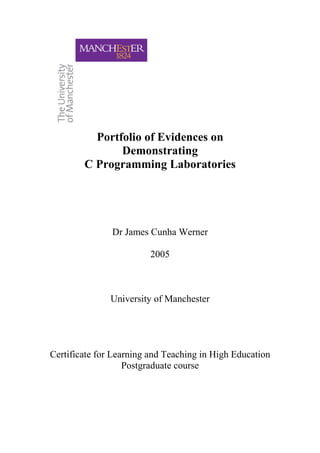

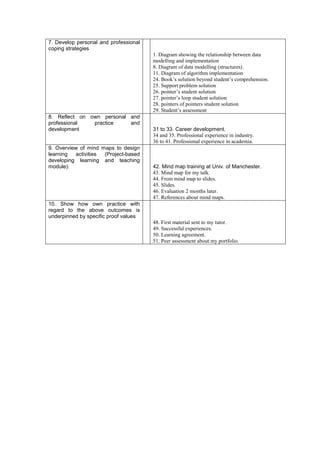

![1. Design and plan learning activities for C Programming
Laboratory demonstration.
Design and plan a learning activity requires from lecturers/demonstrators the
knowledge of the following issues:
1. What are the major models of learning process to understand how people
acquire skills.
Select a winner teaching strategy requires understand how people assimilate
new information, and change their behaviour (learn). There are 3 major
learning theories: Behaviorism, Cognitivism, and Constructivism.
Behaviorism uses conditioning to achieve learned responses. The repetition
of stimula/response automatises the behaviour. Learning is accomplished
when a proper response is demonstrated following the presentation of a
specific environmental stimulus[1]
.
Thorndike [1]
introduced 3 laws to explain his point of view:
• Law of exercise: Repetition of exercise increases the probability of correct
response. <with practice, the associations are strengthened or weakened
and the appropriate behaviour is emitted more reliably>.
• Law of effect: A satisfying state of affairs following the response
strengthens the connection between the stimulus and the behaviour,
whereas an annoying state weakens the connection. <associations are
made only when the behaviour is connected with a reinforcing
consequence>.
• Law of transfer: The conditioned behaviour will only occur under stimulus
conditions similar to those in which the behaviour was initially learned.](https://image.slidesharecdn.com/e538a273-dd9f-486b-bb61-e07d660e441c-151009211835-lva1-app6892/85/200512F_CLTHE_Full-5-320.jpg)
![Pavlov pointed out that reflex actions (involuntary) were trained so that the
reflexes can be elicited by a stimulus other than that which naturally elicits
them. Pavlov showed that when a conditioned stimulus is paired with another
neutral stimulus, the second stimulus can also become conditioned.
Cognitivism is based in the thought process behind the behaviour. In cognitive
theories, knowledge is viewed as symbolic mental constructs in the learner's
mind, and the learning process is the means by which these symbolic
representations are committed to memory. Changes in behaviour are
observed as indication of what is going on in learner's head[2]
.
Piaget studied how a child comes to know his or her world. He is renowned
for constructing a highly influential model of child development and learning.
Piaget's theory is based on the idea that the developing child builds cognitive
structures--in other words, mental "maps," schemes, or networked concepts
for understanding and responding to physical experiences within his or her
environment. Piaget further attested that a child's cognitive structure
increases in sophistication with development, moving from a few innate
reflexes such as crying and sucking to highly complex mental activities.
Vygotsky’s concepts of the social formation of the mind and the Zone of
Proximal Development add much to our understanding of human
development. The social cognition learning model asserts that culture is the
prime determinant of individual development. Humans are the only species to
have created culture, and every human child develops in the context of a
culture. Therefore, a child's learning development is affected in ways large
and small by the culture--including the culture of family environment--in which
he or she is enmeshed.](https://image.slidesharecdn.com/e538a273-dd9f-486b-bb61-e07d660e441c-151009211835-lva1-app6892/85/200512F_CLTHE_Full-6-320.jpg)
![Construtivism is based in the conception of learning. Von Glasersfeld[3]
argues that: "From the constructivist perspective, learning is not a stimulus-
response phenomenon. It requires self-regulation and the building of
conceptual structures through reflection and abstraction" (p.14). Fosnot [4]
adds that "Rather than behaviours or skills as the goal of instruction, concept
development and deep understanding are the foci (...) (p.10). For educators,
the challenge is to be able to build a hypothetical model of the conceptual
worlds of students since these worlds could be very different from what is
intended by the educator [5],[6]
.
In this paradigm, learning emphasizes the process and not the product. How
one arrives at a particular answer, and not the retrieval of an 'objectively true
solution', is what is important. Learning is a process of constructing
meaningful representations, of making sense of one's experiential world. In
this process, students' errors are seen in a positive light and as a means of
gaining insight into how they are organizing their experiential world. The
notion of doing something 'right' or 'correctly' is to do something that fits with
"an order one has established oneself"[7]
. This perspective is consistent with
the constructivist tendency to privilege multiple truths, representations,
perspectives and realities.
Ertmer[8]
make a comparative study of all three theories[9]
.
2. What are the requirements students will face after the learning process, or,
what the learning process is intended for.
Physicists are entitle to work teaching at Universities and High Schools, or
developing complex system models for industries, banks, and engineering](https://image.slidesharecdn.com/e538a273-dd9f-486b-bb61-e07d660e441c-151009211835-lva1-app6892/85/200512F_CLTHE_Full-7-320.jpg)
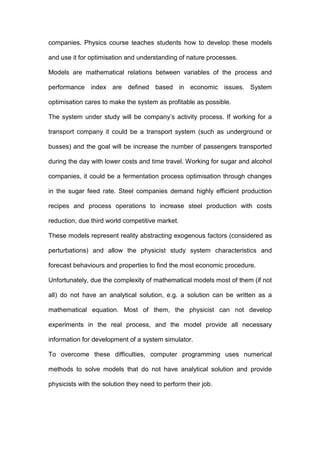
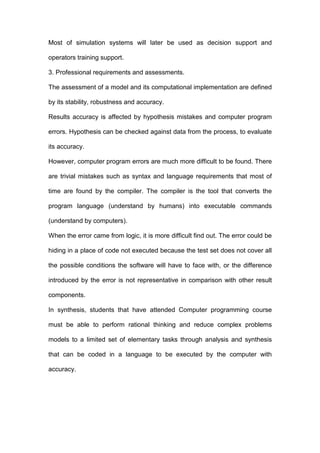
![These skills are not able to be performed using any magic rules or recipes.
There are methodologies that help to perform the process, representing
knowledge and relationships, but the final result is programmer’s creation.
The practical fulfilment of these requirements is realised by construtivism
approach. Learning is not a stimulus-response phenomenon. It is the
construction of a meaningful solution based in student's hypothetical model of
the conceptual worlds, ruled by syntax and logic of programming language.
Learn the necessary information and be able to perform the activity demands
a very practical approach. Students attending a lecture most of the time are
driven by the lecturer.
Karen Anderson[10]
analysed lectures structure at MIT physics course and
their change to Technology Enabled Active Learning, or TEAL, a student
centred approach where lectures became more practical.
It is almost impossible develop a lecture where students are agent of the
process.
It would be a disaster teach programming language using lectures approach
only because there are infinite ways to solve the same problem under a
creative centred approach. Each approach has positive and negative points
and are valid as far they can produce the correct solution.
It is not only the algorithm they are using to solve the problem. It is how they
write the algorithm using computer language. For example, they could use
different types of loops to perform the task. All of them are correct, but
showing different reasoning.
They have to develop the ability to use the correct code structure and logical
reasoning from a problem description in English. The code must be clear to](https://image.slidesharecdn.com/e538a273-dd9f-486b-bb61-e07d660e441c-151009211835-lva1-app6892/85/200512F_CLTHE_Full-10-320.jpg)
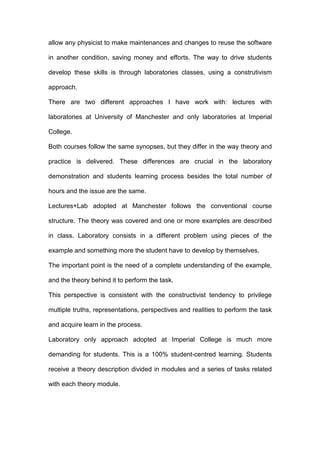
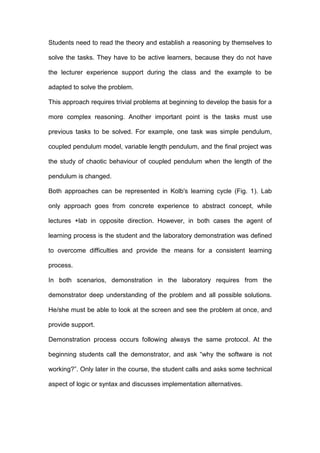
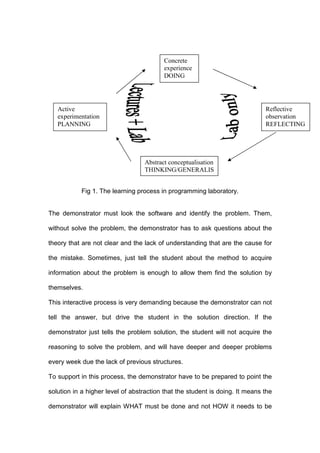
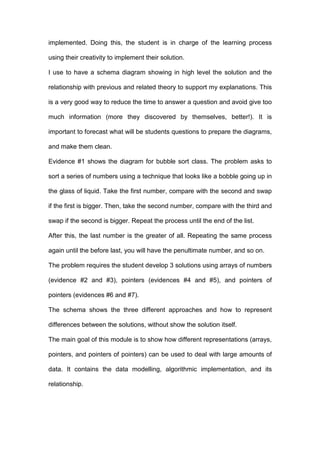




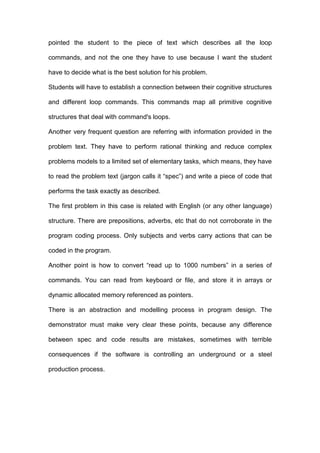

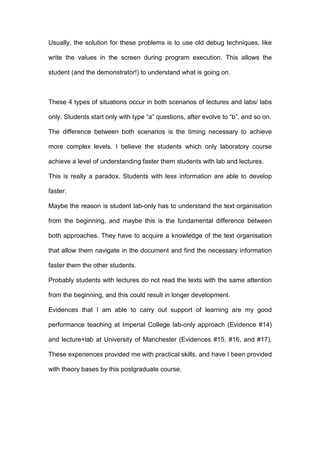
![3. Devise and apply appropriate strategies and criteria for
assessment
Understand assessment stress demands understand students’ context. Most
students have education loan or are spending considerable amount of family’s
resources in their education. They are facing adulthood transition, and they
are not sure about their own capabilities.
Under this context, for them fail in one examination could means fail as
individual. High marks represent a pay back for their families, increase in their
self-esteem, and develop confidence.
By the other side, assessment is also a society's guarantee that when the
students become a professional he will not kill someone due his (or his
teachers') incompetence. I have been in several accident evaluation and
recovery due software implementation, and the causes sometimes are sensor
failure due environmental conditions, and regretfully, sometimes are software
implementation. Hazard operation evaluation could prevent most accidents, it
is a mandatory step in the implementation of any software (such as
underground or steel production), but accidents still happening.
Methods of Assessment [11]
from Constructivism point of view are the idea that
learning is an active process of building meaning for oneself. Thus, students
fit new ideas into their already existing conceptual frameworks. Constructivists
believe that the learners' preconceptions and ideas about science are critical
in shaping new understanding of scientific concepts. Assessment based on
constructivist theory must link the three related issues of student prior
knowledge (and misconceptions), student learning styles (and multiple
abilities), and teaching for depth of understanding rather than for breadth of](https://image.slidesharecdn.com/e538a273-dd9f-486b-bb61-e07d660e441c-151009211835-lva1-app6892/85/200512F_CLTHE_Full-22-320.jpg)
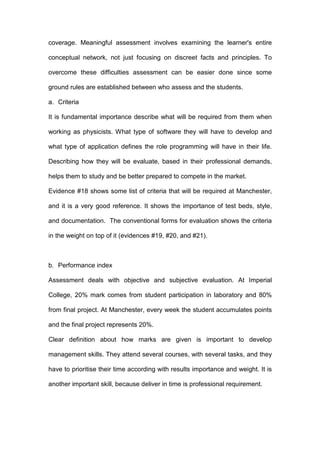

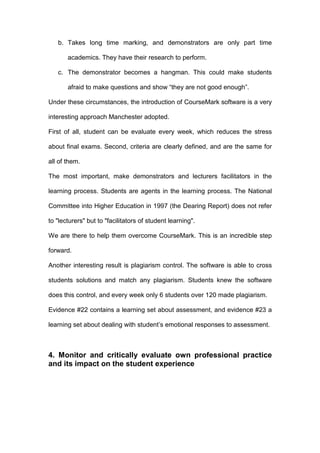
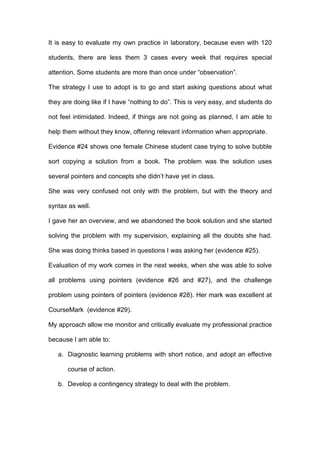

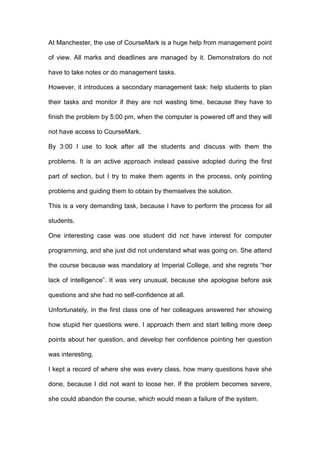

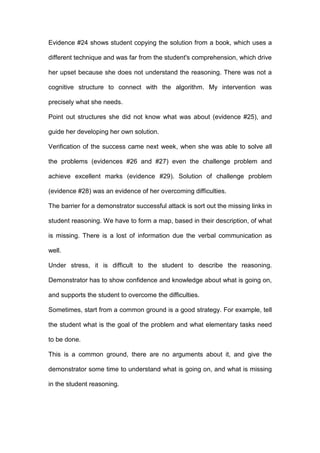
![In any case, situation must end with the demonstrator making clear for the
student that this is a normal process, and the student should think about how
they have overcome the difficulties using rational strategy, and how they have
coped with anxiety. It is not a coincidence that computers analysts have
higher incidence of heart attack and strokes due the lack of anxiety dealing
mechanisms and sedentary life.
7. Develop personal and professional coping strategies
There are several barriers in any apprenticeship. Some endogenous to the
issue, such as familiarity with abstraction, modelling, conceptualism, logic,
and implementation approaches. Chapter 6 point out how to cope with these
endogenous barriers specifically in programming languages.
However students are not alone, without social interaction. They are in a
cosmopolitan society, where several exogenous barriers could interfere with
learning process. From the constructivist point of view[12]
, "Whether
knowledge is seen as socially situated or whether it is considered to be an
individual construction has implications for the ways in which learning is
conceptualized. From the radical constructivist perspective, how can their
theory encompass both the collective activity and the individual experience to
take into account the important classroom social interactions that are so much
a part of the entire educational process? Such questions underlie the
complexities involved in translating the diversity of perspectives into a
common set of principles that can be operationalized."](https://image.slidesharecdn.com/e538a273-dd9f-486b-bb61-e07d660e441c-151009211835-lva1-app6892/85/200512F_CLTHE_Full-31-320.jpg)
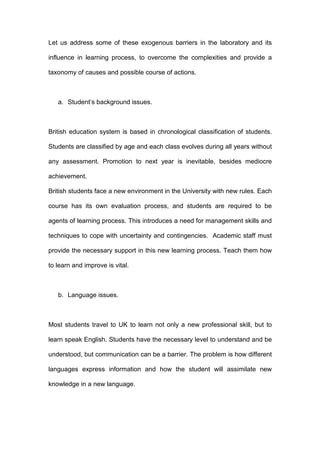
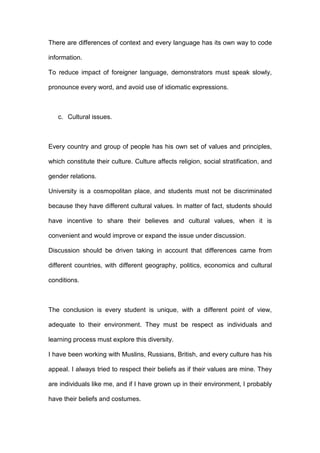
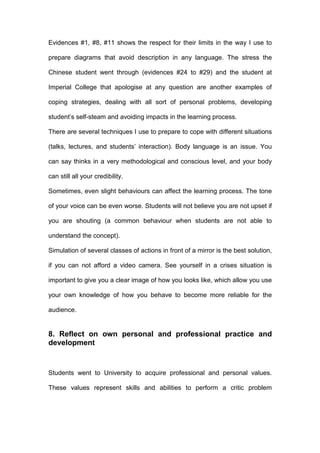




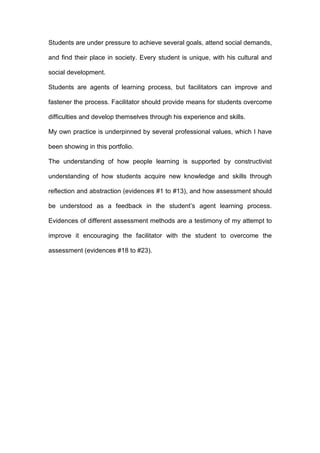
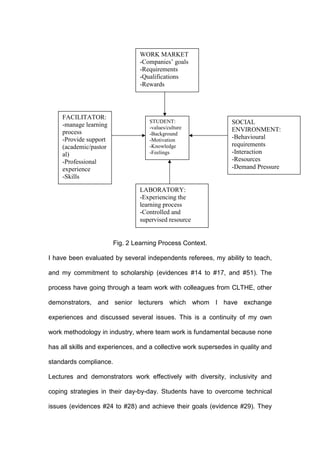


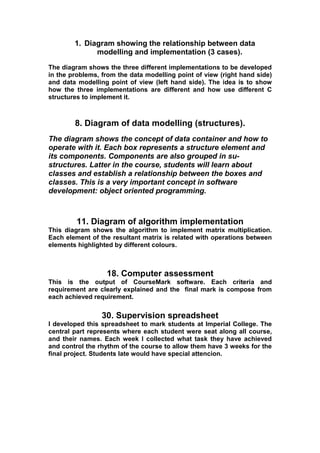

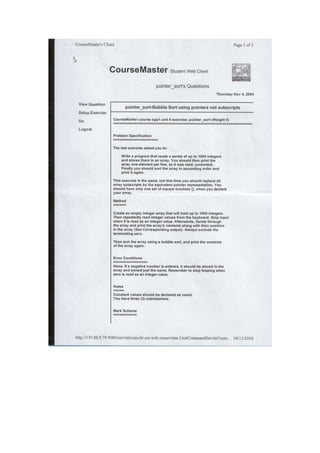

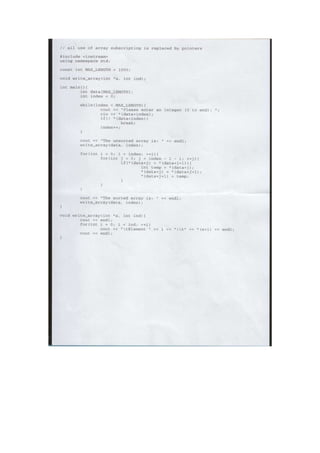

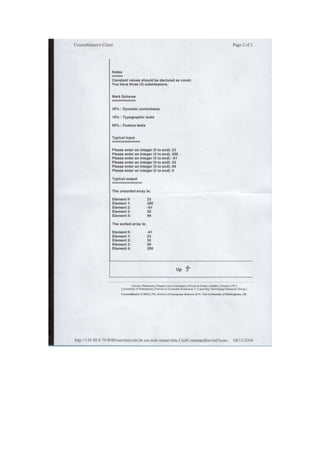



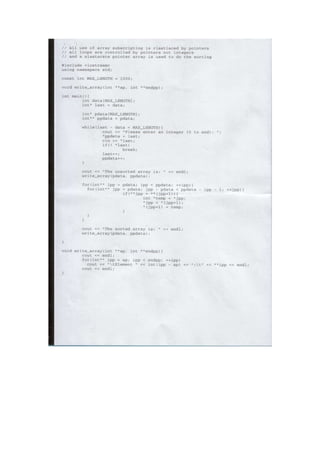

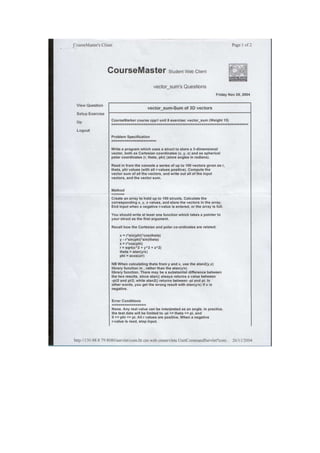

![/********************************************************************
*****
*
* Three-dimensional vector_sum program
* PWM 16/11/04
*
*********************************************************************
*****/
#include <iostream>
#include <fstream>
#include <cmath>
using namespace std;
/* vec3 represents a 3D vector, where
x = r*sin(phi)*cos(theta)
y - r*sin(phi)*sin(theta)
z = r*cos(phi)
r = sqrt(x*x + y*y + z*z)
theta = atan(y/x)
phi = acos(z/r)
*/
struct vec3{
double x;
double y;
double z;
double r;
double theta;
double phi;
};
// vec3 functions, taking pointer to vec3 as first argument
void print_vec3(vec3* vp);
void x_y_z(vec3* vp);
void r_theta_phi(vec3* vp);
void sum_array(vec3* vp2, vec3* vec_array, vec3* end);
int main(void){
const int MAX = 100;
vec3 va[MAX];
// read in the r, theta, phi values
// after input end points just past end of active array
// input terminates when r < 0
vec3* end;
for(end = va; end - va < MAX; ++end){
cout << "Please enter three values for r, theta and phi
(r < 0 to end): ";
cin >> end->r;
if(end->r < 0) break;
cin >> end->theta >> end->phi;
x_y_z(end);
}
// output the values
cout << "nThe array of 3D vectors is: " << endl;](https://image.slidesharecdn.com/e538a273-dd9f-486b-bb61-e07d660e441c-151009211835-lva1-app6892/85/200512F_CLTHE_Full-57-320.jpg)
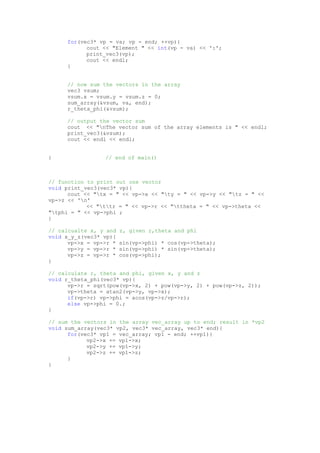

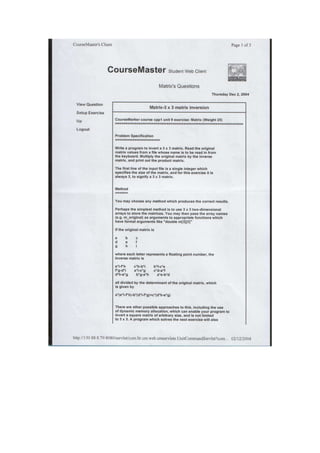


![/********************************************************************
***********
*
* 3 x 3 matrix inversion
* PWM
* 25/11/04
*
*********************************************************************
**********/
#include <iostream>
#include <fstream>
#include <cstdlib>
#include <cmath>
using namespace std;
void print_mat3(double m[3][3]);
int main(){
double m1[3][3], m2[3][3], m3[3][3] = {};
char infilename[20];
cout << "Please enter input file name. " ;
cin >> infilename;
ifstream in(infilename);
if(!in){
cerr << "Failed to open input file " << infilename <<
endl;
exit(1);
}
// read in matrix dimension
int dim;
in >> dim;
if(dim != 3){
cerr << "Program deals only with 3 x 3 matrices." <<
endl;
exit(1);
}
for(int j = 0; j < 3; ++j)
for(int k = 0; k < 3; ++k)
in >> m1[j][k];
// output matrix
cout << "nThe original matrix is " << endl;
print_mat3(m1);
double a = m1[0][0], b = m1[0][1], c = m1[0][2];
double d = m1[1][0], e = m1[1][1], f = m1[1][2];
double g = m1[2][0], h = m1[2][1], i = m1[2][2];
// calculate determinant
double det_m1 = a*(e*i - f*h) - b*(d*i - f*g) + c*(d*h
- e*g);
if(!det_m1){](https://image.slidesharecdn.com/e538a273-dd9f-486b-bb61-e07d660e441c-151009211835-lva1-app6892/85/200512F_CLTHE_Full-63-320.jpg)
![cout << "Singular matrix." << endl;
exit(2);
}
else
cout << "The determinant of the matrix is " << det_m1 <<
endl;
// calculate inverse matrix
m2[0][0] = e*i - f*h;
m2[0][1] = c*h - b*i;
m2[0][2] = b*f - c*e;
m2[1][0] = f*g - d*i;
m2[1][1] = a*i - c*g;
m2[1][2] = c*d - a*f;
m2[2][0] = d*h - e*g;
m2[2][1] = b*g - a*h;
m2[2][2] = a*e - b*d;
for(int j = 0; j < 3; ++j)
for(int k = 0; k < 3; ++k)
m2[j][k] /= det_m1;
// print out inverse
cout << "nThe inverse matrix is " << endl;
print_mat3(m2);
// multiply m1 and m2, result in m3
for(int j = 0; j < 3; ++j)
for(int k = 0; k < 3; ++k)
for(int m = 0; m < 3; ++m)
m3[j][k] += m1[j][m] * m2[m][k];
// print out product
cout << "The product of the two is " << endl;
print_mat3(m3);
} // end of main()
void print_mat3(double m[3][3]){
cout << endl;
for(int j = 0; j < 3; ++j){
for(int k = 0; k < 3; ++k)
cout << m[j][k] << 't';
cout << endl;
}
cout << endl;
}](https://image.slidesharecdn.com/e538a273-dd9f-486b-bb61-e07d660e441c-151009211835-lva1-app6892/85/200512F_CLTHE_Full-64-320.jpg)
